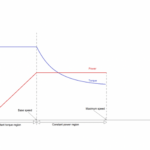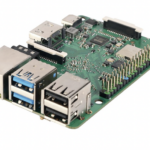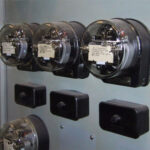Protecting circuits from over current is an important aspect of circuit designing. The cause for over current can be intolerable voltage fluctuation in the power supply, short circuiting, failure of a device or component and overloading. Usually, for the protection of circuits from over current and so the damage from overheating of components, electronic fuses are used in their power supply sections. Electronic fuses are thin metallic wires which melt down over the passage of a threshold current. In the design of power circuits, apart from electronic fuses, circuit breakers are also used for circuit protection. Any circuit breaker operates like a relay which has the ability to detect a threshold current level and disconnect the rest of the circuit by tripping off the supplies.
While fuses need to be replaced every time one blows off, circuit breakers are a cost-effective alternative that remains a part of the power supply without the need of any replacement.
In this project also, an electronic circuit breaker is designed using a relay and switching transistors. The switching transistors help in detecting a pre-determined current level and driving the relay to disconnect rest of the circuit. The switching transistor used is PN2907A. The circuit breaker designed in this project disconnects the circuit from the supplies once the current exceeds 0.6 A. The main supply is assumed to be a DC supply from a battery and the circuit designed in this project avoids drawing excessive current from it by working as a protective shield between the load circuit and DC voltage source (any battery).

Fig. 1: Prototype of Electronic Circuit Breaker
Once the circuit gets disconnected on tripping of the relay, the supplies can be resumed by toggling a DPDT switch of the electronic circuit breaker designed here. The threshold current level can also be increased or decreased in the following circuit by using another set of switching transistors.
Components Required –
Fig. 2: List of Components required for Circuit Breaker
Circuit Connections –
In the circuit, a 24V relay is used to disconnect the load from supplies. The coil terminals of the relay are connected to emitter pins of Q1 and Q2 switching transistors. The Collector pins of the transistors are connected to the ground. The base of Q1 transistor is connected to the collector of the Q2 transistor. The anode of the battery is connected to NO terminal of the relay while its COM terminal is connected to emitter pin of Q2 transistor and a biasing resistor R3. A DPDT switch is connected between the anode terminal of the battery and the output load. The DPDT switch could be toggled to resume supplies by tripping the relay connector again to NO position. An LED in series with a pull-up resistor is connected to the base of Q2 transistor for a visual hint of the supplies continuity. The output voltage is drawn between the DPDT switch and the common ground. The battery used in the project as DC voltage source is a regular 12V battery.
How the circuit works –
The 12V DC is supplied at the input terminals of the circuit by a battery. The supplied voltage is blocked by the relay. On pressing the DPDT switch (SW1) which is initially in its normal position, the circuit gets the power supply. When the circuit gets powered up it also activates the relay so the DPDT switch must be turned back to its normal position. From here on the load is supplied power via the relay and the relay itself is powered by the Q1 transistor.
The base of the Q1 transistor is biased by the resistor R1. The transistor Q2 is biased by the resistor R3. In normal conditions, when there is no short circuit or overloading, the voltage across the R3 remains less than 0.6 volts. The threshold voltage of PN2907A transistors is between 0.6 V to 1.3 V according to its datasheet. So, when the base of the Q2 reaches to its threshold voltage then only it starts conducting. So the transistor Q2 is in OFF state or non-conducting state till the voltage across R3 is lower than its threshold voltage. The current limit can be decided by the R3 resistor. The voltage at R3 is the product of current and resistor value. The threshold voltage of Q2 is 0.6 V therefore for deciding the current limit, the resistor value can be calculated as follow –
Considering desired current limit, I = 0.6 A
Threshold voltage of Q2, V = 0.6 V
R3 = V/I
R3 = 0.6/0.6
R3 = 1 ohm
Therefore for setting a current limit of 0.6, A R3 resistor should have 1-ohm resistance. A variable resistor can also be used in place of R3 for manual adjustment of the current limit.
The load at the output is powered up by the R3 resistor. Therefore, current drawn by the load can be measured by the measuring current across R3. Once the voltage across R3 reaches to 0.6 V then the transistor Q2 starts conducting.
As the transistor Q2 starts conducting, all the current bypasses through it. Therefore no current remains at the base of the transistor Q1. This turns off the transistor Q1. The transistor Q1 in this circuit energizes the relay so as Q2 starts conducting current, Q1 transistor goes into OFF state, so the relay is deactivated turning off the Q2 transistor as well. As a result, the load which is getting power by the relay gets disconnected from the input power supply. This saves the load from a current greater than 0.6 A.
The LED at the output indicates the disconnection of the load from the input supply by switching to OFF state. When the cause of over current is found out and corrected in the load circuit, the DPDT switch needs to be reset for once and switched back to its normal position to resume power supply to the load circuit.
Testing and Precautions –
While designing an electronic circuit breaker like this following precautions must be taken –
• The relay voltage should be less than the input voltage for triggering the relay.
• After resetting the DPDT switch It should be brought back to its normal position. Otherwise, the input supply will not be blocked by the relay but will bypass through the DPDT switch instead.
• The selection of R3 resistor should be considering its wattage depending upon the desired current limit of the circuit, otherwise, it a low wattage rating resistor could get damaged.
Once the circuit is assembled, it can be tested by supplying power by a 12V volt battery to a load connected to the circuit. Use a multimeter to measure current at R3 resistor. Replace the load with another high current drawing load to verify the circuit functioning as a resettable electronic fuse. Try measuring the current level above which the circuit trips off the supply from the battery and compare it with the theoretical conclusions derived above.
The circuit designed in this project has low cost and can be easily assembled. It is an economical alternative of the conventional electronic fuses and circuit breakers. It can also be designed with a variable resistor in place of resistor R3 so it could have adjustable current limitation. The circuit should be used as a protective shield for current sensitive loads and load circuits having transformers or high current rating semiconductor components used in them.
You may also like:
Circuit Diagrams
Filed Under: Tutorials








